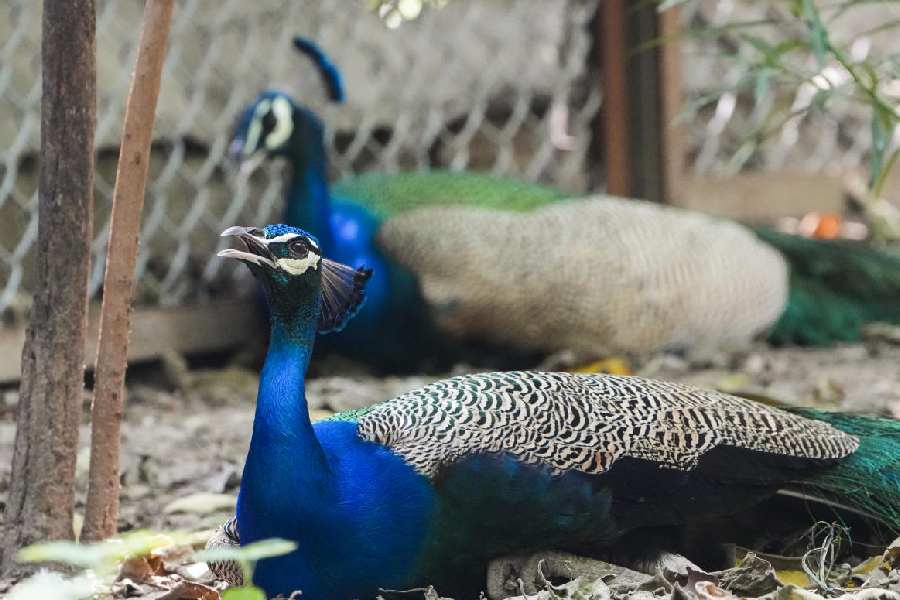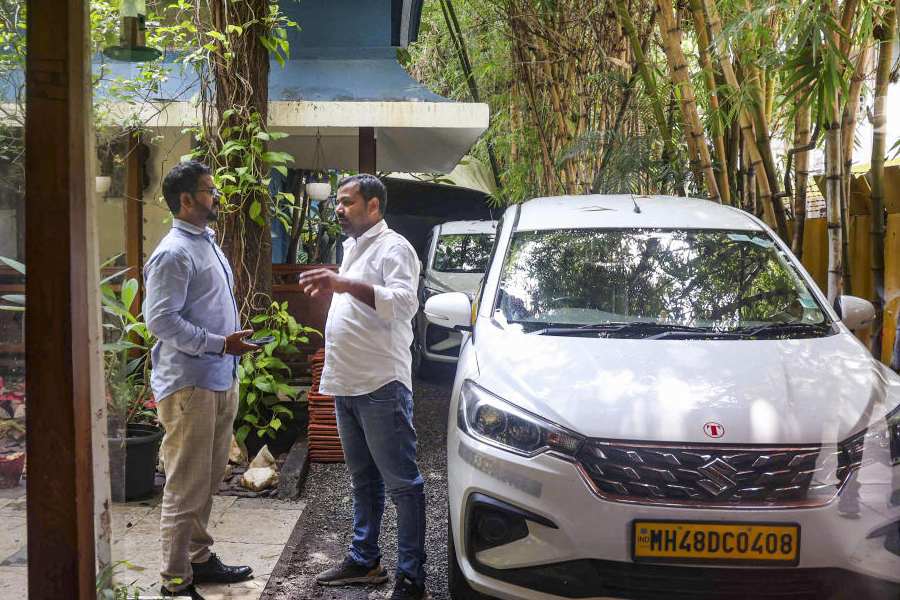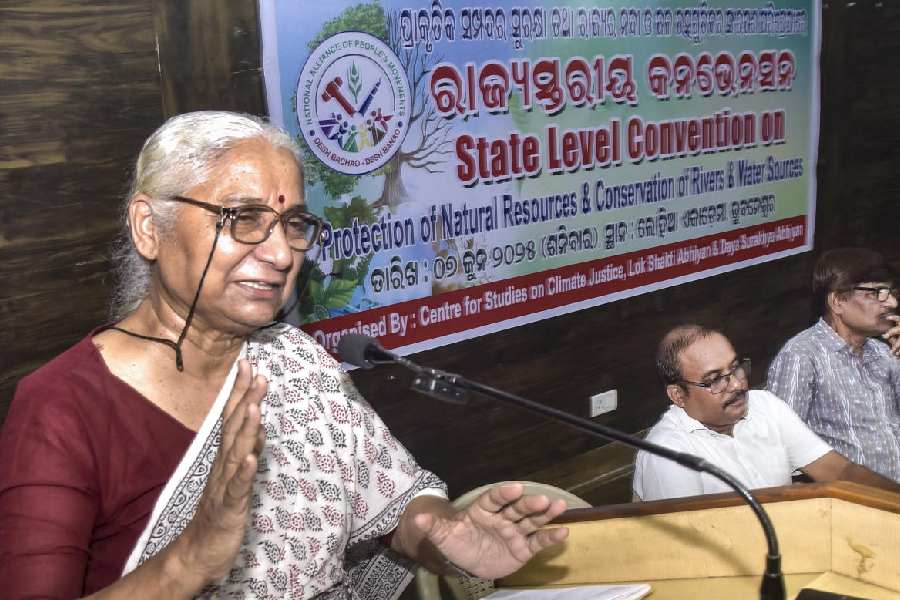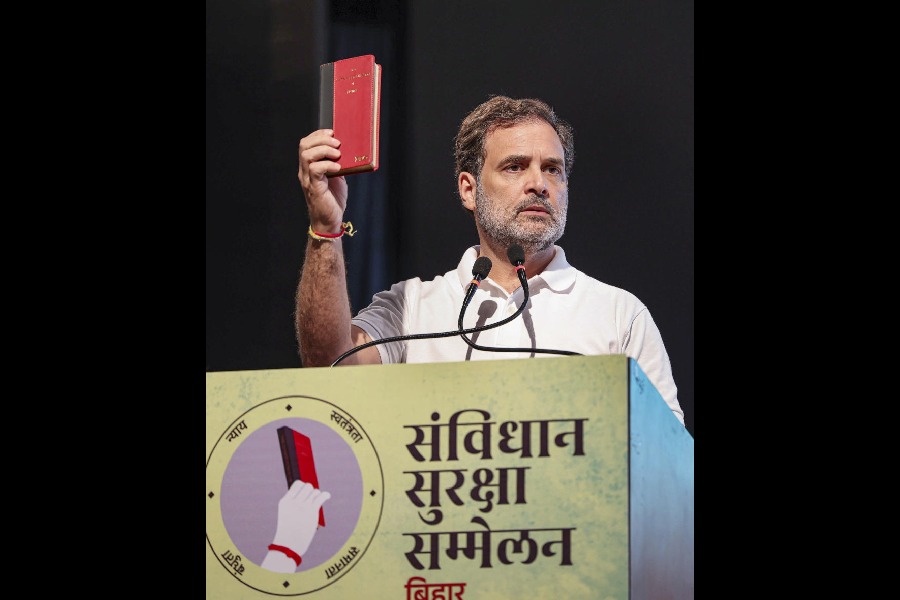 |
 |
 |
| (From top) Gajapati Dibyasingh Deb and Maharani Lilabati Pattamahadei. The ancient sabari or palanquin taken out of storage after 60 years |
Next Sunday, Lilabati Pattamahadei will see something she hasn’t in three decades of living in Puri.
The Maharani of Puri has never been to the town’s most famous landmark, the Jagannath temple, just 500 yards from her home.
The 12th-century shrine draws millions of Indian pilgrims every year, and thousands of foreign tourists. But the queen, whose husband is the Lord’s first sevak, is not allowed to visit the temple — except once in her life.
April 8 will be the day, yet the 51-year-old queen will be missing a lot, too. She will not get to see those familiar scenes that define the temple to most people: the jostling crowds and the busy pandas.
The purdah-bound queen must be screened from the public on so auspicious an occasion, so all devotees and priests will be banned from the premises on Sunday afternoon.
The queen will ride a special, closed palanquin to a sanitised temple while the king, Gajapati Dibyasingh Deb, will arrive in another for the Gahan Bije (private visit).
The king will be handed over the keys to the premises, and he and the queen, helped by a boy priest and a married Brahmin woman, will perform the rites inside the sanctum sanctorum. After this, other members of the royal family will offer puja.
“The Kurma Bedha (inner ring) will be closed to pilgrims and sevayats from 3 pm. The Gahan Bije will start at 4 pm,” said Binod Mohanty, administrator (rituals) of the temple.
The last such visit took place in 1966, when Lilabati’s mother-in-law Suryamani Pattamahadei came to the temple. That was 12 years before Lilabati, who was born into the Jammu royal family, married Gajapati.
“She would, of course, have glimpsed the Lord before — through a peephole in the palace during the annual return journey (Bahuda Yatra) of the Laxmi Narayan Bheta ritual,” said Damodar Singhari, a senior sevayat. “But with Gahan Bije, she turns into a servant of the Lord.”
Tradition demanded that the Maharani as well as her daughters — Divyajyoti, Devyani, Devika and Devesi — be carried from the palace to the temple in palanquins. But there weren’t enough of these, so the princesses will be arriving by car, Mohanty said.
“Eight people, mainly from the Gouda (milkman) caste, will carry the queen’s palanquin and 14 will shoulder the king’s,” he added.
The queen’s public appearances are rare and confined mostly to religious occasions, but the rest of the family face no such restrictions.
Gajapati, who went to St Stephen’s College, Delhi, became king after his father Birakishore Deb’s death in 1976 and has been performing his traditional duties ever since. He has provided his daughters with good education. The first three have graduated from Mayo College, Ajmer, and the youngest is studying at a public school in Bhubaneswar.
The eldest princess, Divyajyoti, is a postgraduate in psychology and used to teach at a public school in Bhubaneswar. She married Riddhi Raj, a prince from Gujarat, on March 6.
“The king has arranged her reception at the palace on April 8 evening. The groom and members of his family, too, are expected to be part of the Gahan Bije,” a source close to the palace said.
A ‘headache’
Finding the palanquin for the queen was a “headache”, Mohanty confessed, “because these are not in use any more”.
Finally, one was found in a 15th-century monastery, the Bada Oriya mutt.
“The palanquin was last used by the mutt’s mahant, Adikari Brundaban Das Goswami, in 1978. It’s old and in need of repairs,” said Chandrasekhar Hota, a mutt inmate.
Made of gambhari, sal and piasal wood, the palanquin is sturdy but light. The floor, made of cane, is in tatters.
“There is a shutter-like door on each side, with windows of coloured glass that allow the rider a view of the streets,” Hota said.
Last week, the palanquin was brought to the palace, which has hired two carpenters to repair and repaint it, sources said.
Mutt inmates said the rectangular palanquin can accommodate two persons, if only one can find sufficient bearers.
“After the vesting of land in their name, the bearers stopped serving the mutt,” Hota said.
“We have managed to find six (experienced) bearers and two others to help them carry the palanquin to the temple,” Mohanty said.
The mutt will not be charging the palace anything, but expects the renovated palanquin to be returned after use.
The king will be travelling in his own tamzaan — a silver-studded, ornate palanquin that he uses during Rath Yatra — carried by his own team of 14 bearers.
Protests
Rationalists have objected to the palanquins, saying having them carried by people is against human dignity.
“It undermines individual dignity and violates human rights,” said B. Ramachandra, secretary of the Anti-caste Marriage and One-child Family Organisation of India (AMOFOI) and founder member of the Orissa Rationalist Society.
“It’s unfortunate that no one from the Gouda community has come forward to oppose this feudalistic practice.”
Ramachandra added that the AMOFOI would demonstrate against the “feudalistic ritual” before Raj Bhavan on Friday.










